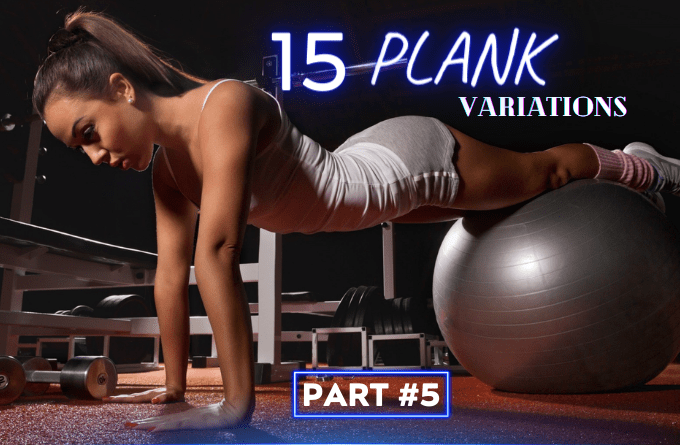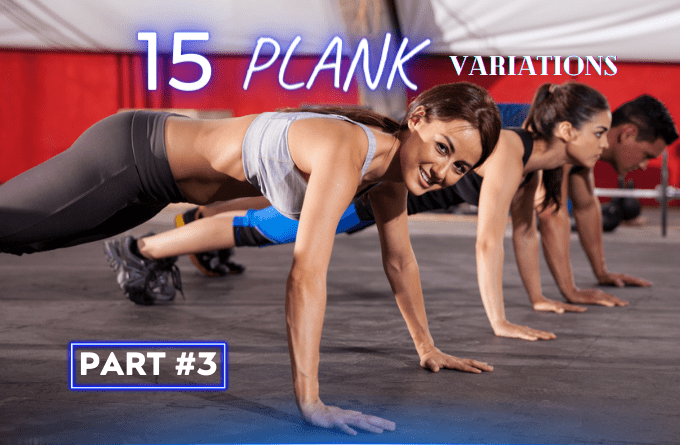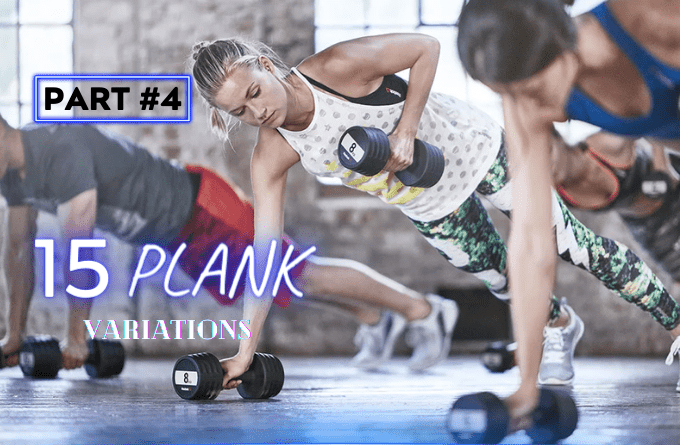
Table of Contents
ToggleExperience an intense workout with specialized plank variations! From mountain climbers to Swiss ball jackknives, these exercises challenge different muscle groups, boosting core strength and overall functional fitness.
Exploring Specialized Plank Variations
Dive deeper into specialized plank variations that add complexity and diversity to your fitness regimen. In this final article, we’ll explore three unique plank variations that challenge different muscle groups and improve overall functional strength.
13. Mountain climber
Adding a cardiovascular element, mountain climbers engage the entire body while maintaining a plank position, making them a high-intensity exercise.
Mountain climbers activate your whole body. They’re a really effective exercise with a burst of cardio. Be sure to keep your wrists, arms, and shoulders stacked throughout the exercise.

Start in full plank position with your hands directly under your shoulders.
Place your hands slightly wider than your shoulders and use your upper body and pelvis to stabilize yourself.
Keeping your core engaged, lift your right foot off the floor and bring your right knee toward your chest. Avoid rotating your hips or shoulders. Return to the starting position and do the same with your left knee.
Continue this movement for 20–30 seconds, or as long as you can maintain proper form.
Pro tip: As you become more comfortable, you can pick up speed. The faster you go, the more cardiovascular benefit you gain — but be sure to still safely maintain proper form.
14. Plank jack
This dynamic plank variation increases heart rate and works multiple muscle groups, offering a blend of strength and cardio benefits.
Plank jacks get your heart pumping during your strength routine.

Start in a forearm plank or high plank.
Jump both feet outward, wider than hip-distance apart.
Immediately hop them back into the original plank position.
Aim to complete 2–3 sets of 30 seconds, or as long as you can maintain proper form.
Pro tip: Throughout the exercise, be careful not to raise or lower your hips out of the straight-line position.
15. Swiss ball jackknife
Considered an advanced move, the Swiss ball jackknife enhances stability and strength by incorporating a balance challenge into the plank.
Swiss ball jackknives are also excellent for building strength and stability. However, this is considered an advanced move and should be done with caution.

Start in full plank position with your lower legs or feet on an exercise ball. The farther the ball is from your head, the harder the exercise will be. Activate your abs to maintain stability and align your spine.
Gently lift your hips by engaging your core and pushing through your shoulders. Roll the ball forward with your feet, pulling your knees toward you. Be careful not to drop your hips or round your back.
Extend your legs, rolling the ball back, to return to the starting plank position. Be sure to keep your shoulders directly over your wrists throughout the exercise.
Due to the difficulty of this move, you may be able to perform only a few reps at a time. Continue to increase the number of reps as you gain strength.
Pro tip: Moving the ball farther away from your center increases the challenge for your abs. Aim to initiate the move from your lower abs, not your hip flexors.
Incorporating these specialized plank variations into your routine will offer a diverse range of benefits, improving core strength, cardiovascular fitness, and overall functional strength. Utilize these variations wisely to create a well-rounded and effective workout routine.
Integrating these diverse plank variations into your workouts will help you maximize the benefits of planking, improving core strength, stability, and overall fitness.
<<< Previously: Intermediate Plank Variations Explored
|Part #1 |Part #2 |Part #3 |Part #4 \Part #5
Next: Building Foundation with Basic Planks >>>
Exploring Advanced Planking Techniques for Total Body Fitness
Interesting Fact: Planking engages nearly 20 muscles, making it an efficient full-body workout, targeting not just the core but also the arms, shoulders, and legs.
While planking primarily targets the core, its advantages extend far beyond. Engaging multiple muscle groups – from arms to glutes – planks boost overall strength. Additionally, they enhance balance, coordination, and posture, making daily activities easier and more efficient.







